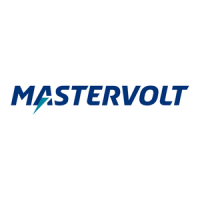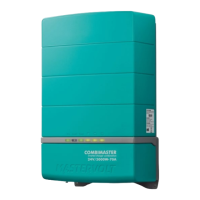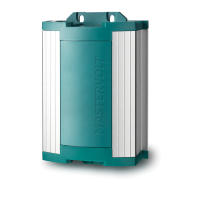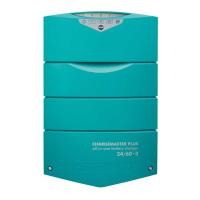– User and Installation Manual
4.5.4 Network wiring (CZone/MasterBus)
The CombiMaster Inverter/Charger can be connected to a CZone or MasterBus network. For CZone,
use an RJ45 CZone drop cable to connect to the CZone backbone. For MasterBus, use a MasterBus
cable and daisy chain the CombiMaster Inverter/Charger to the other devices. Both networks need a
terminating device on both ends of the network. Do not make ring networks. For more details on
networks, please contact your Mastervolt dealer.
• CZone network
Points to consider:
˗ Up to 40 devices can be connected together on a single backbone.
˗ Make sure the CZone network has two terminating resistors, one at each open end of the
backbone.
˗ The electric power for the network comes from a battery or power supply. Make sure that it
delivers enough power and is positioned as close to the middle of the backbone run as possible
to reduce voltage drop.
˗ Each device on the CZone network has a unique CZone address; the Dipswitch. This number is
usually assigned automatically during configuration and must match the DIP switch settings on
the CombiMaster Inverter/Charger.
• MasterBus network
Use an RJ45 MasterBus cable (not included) and daisy chain the CombiMaster Inverter/Charger to
the other MasterBus devices, forming a local data network.
Points to consider:
˗ Connections between the devices are made by standard MasterBus cables. Mastervolt can
supply these cables.
˗ Up to 63 MasterBus devices can be connected together.
˗ MasterBus needs a terminating device on both ends of the network.
˗ The electric power for the network comes from the connected devices according to the rule:
1powering / 3 non-powering. Spread the powering devices over the network
˗ Do not make ring networks.
˗ Do not make T-connections in the network.
Never connect a non-MasterBus device to the MasterBus network directly! This will
void warranty of all MasterBus devices connected.
For more details on networks, please contact your Mastervolt dealer.

